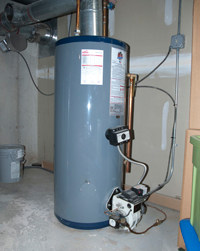We have found this post about How to Maintain a Hot Water Heater in a Few Simple Steps down the page on the net and believe it made sense to relate it with you in this article.

Hot water is crucial for everyday convenience, whether it's for a refreshing shower or cleaning dishes. To guarantee your warm water system runs effectively and lasts much longer, regular maintenance is vital. This post gives useful pointers and insights on exactly how to keep your home's warm water system to avoid disturbances and costly repair services.
Intro
Maintaining your home's hot water system may appear difficult, but with a few basic actions, you can guarantee it operates smoothly for many years ahead. This guide covers whatever from recognizing your warm water system to DIY maintenance suggestions and understanding when to call in expert aid.
Relevance of Maintaining Your Hot Water System
Regular maintenance not only expands the lifespan of your hot water system but also ensures it operates effectively. Ignoring upkeep can lead to reduced effectiveness, higher energy expenses, and even premature failure of the system.
Signs Your Hot Water System Needs Maintenance
Knowing when your hot water system needs attention can stop major problems. Watch out for indications such as inconsistent water temperature, unusual noises from the heating unit, or rustic water.
Flushing the Water Heater
Flushing your water heater gets rid of debris build-up, boosting performance and lengthening its life.
Monitoring and Changing Anode Rods
Anode rods avoid corrosion inside the tank. Examining and replacing them when broken is critical.
Facility Problems Needing Professional Help
Examples consist of significant leaks, electrical troubles, or if your hot water heater is regularly underperforming.
Routine Professional Upkeep Advantages
Professional upkeep can consist of extensive evaluations, tune-ups, and ensuring compliance with safety criteria.
Checking and Adjusting Temperature Level Setups
Readjusting the temperature settings ensures optimal efficiency and security.
DIY Tips for Upkeep
You can do numerous upkeep tasks yourself to keep your warm water system in top problem.
Looking for Leakages
Regularly evaluate pipelines and connections for leakages, as these can result in water damage and greater expenses.
Understanding Your Warm Water System
Before diving right into maintenance jobs, it's useful to recognize the fundamental components of your warm water system. Generally, this includes the water heater itself, pipes, anode rods, and temperature level controls.
Regular Monthly Upkeep Tasks
Routine monthly checks can aid catch minor concerns prior to they intensify.
Examining Stress Relief Valves
Checking the pressure safety valve ensures it operates appropriately and avoids excessive pressure accumulation.
Shielding Pipes
Insulating warm water pipes reduces warm loss and can conserve power.
When to Call a Specialist
While do it yourself maintenance is advantageous, some problems require expert experience.
Verdict
Routine upkeep of your home's warm water system is vital for efficiency, longevity, and expense financial savings. By adhering to these suggestions and recognizing when to look for professional assistance, you can make sure a dependable supply of warm water without unexpected interruptions.
How to Maintain an Instant Hot Water Heater
Before tinkering with your hot water heater, make sure that it’s not powered on. You also have to turn off the main circuit breaker and shut off the main gas line to prevent accidents. Also turn off the water valves connected to your unit to prevent water from flowing into and out of the appliance. 2. When you’re done, you have to detach the purge valves’ caps. These look like the letter “T†and are situated on either side of the water valves. Doing so will release any pressure that has accumulated inside the valves while at the same time avoid hot water from shooting out and burning your skin. 3. When the purge valves’ caps are removed, you have to connect your hosing lines to the valves. Your unit should have come with three hoses but if it didn’t, you can purchase these things from any hardware or home repair shops. You can also get them from retail stores that sell water heating systems. Read the user’s manual and follow it to complete this task properly. When the hosing lines are connected, open the purge port’s valves. 4. You should never use harsh chemical cleaners or solutions when cleaning your unit. Make use of white vinegar instead. It should be undiluted and you’ll probably use about 2 gallons. 5. Now flush your water heater. This task should probably take about 40 minutes. We can’t give you specific directions for this because the procedure is carried out depending on the type, model and brand of your heater. With that being said, refer to the user’s manual. 6. When you’re done draining the unit, you have to turn off the purge port valves again. Remove the hosing lines that you earlier installed on each of the water valves. Put the valve caps (purge port) back in their respective places and be very careful so as not to damage the rubber discs that are found inside these caps. 7. Now that everything’s back in place, check your user’s manual again to find out how to reactivate your water heating system. 8. Once it is working, turn one of your hot water faucets on just to let air pass through the heater’s water supply pipes. Leave the tap on until water flows smoothly out of it. https://www.orrplumbing.com/blog/2014/september/how-to-maintain-an-instant-hot-water-heater/
Hopefully you enjoyed reading our excerpt about Tips on Maintaining a Water Heater. Thank you so much for taking the time to browse our posting. If you enjoyed reading our article please make sure you remember to share it. Thanks a lot for going through it.
Click For More Information